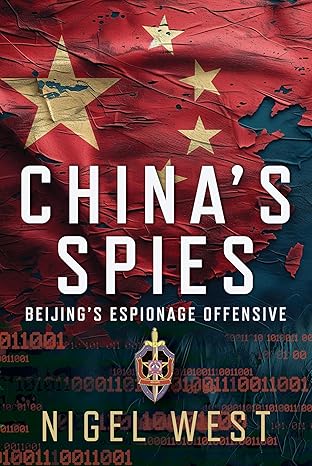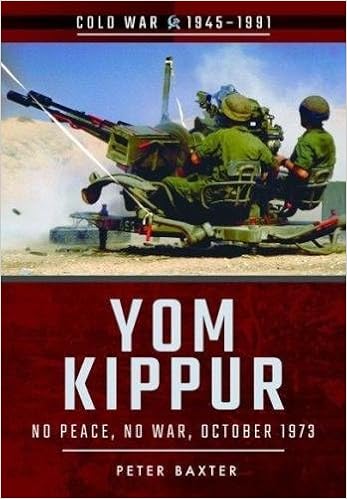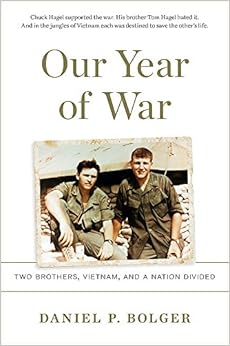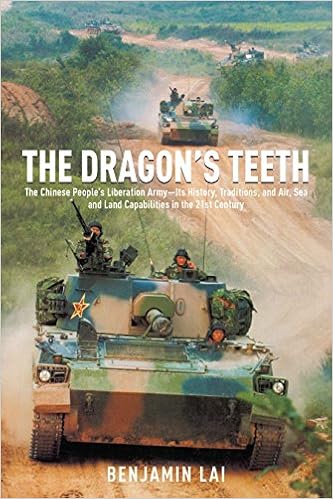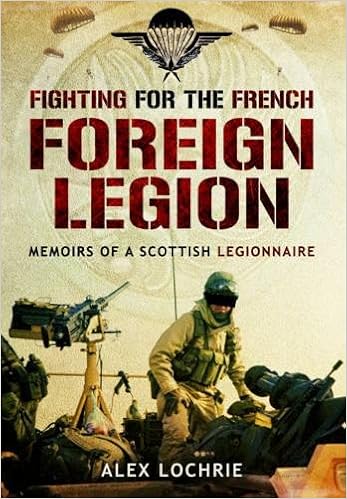Mission Command During the Battle of Mogadishu
By MSG Garrett D. Roberson Jr.
| Mission Command During the Battle of Mogadishu |
The Battle of Mogadishu, one of the most intense urban battles of modern times, demonstrated the crucial role of mission command in achieving success in military operations. The concept of mission command has been a cornerstone of the U.S. Army's doctrine for many years. It refers to the ability of a commander to effectively direct and coordinate their forces to accomplish assigned tasks and objectives. At the core of mission command is the idea of decentralized execution and leadership, which empowers subordinates to take disciplined initiative and make decisions within the broader framework of the commander's intent (Department of the Army [DA], 2019). This paper examines how the principles of mission command, the elements of command and control (C2), and the C2 warfighting function played a critical role in dealing with the complex and unpredictable scenarios encountered during the Battle of Mogadishu.
| The Principles of Mission Command |
The principles of mission command—competence, mutual trust, shared understanding, commander's intent, mission orders, disciplined initiative, and risk acceptance—form a robust framework for effective communication, decentralized decision-making, and adaptability in the face of changing circumstances (DA, 2019). By leveraging these principles, leaders can foster unified teams, cultivate a culture of empowerment and accountability, and ultimately achieve mission success, especially in urban combat operations' tumultuous and unpredictable settings. The Battle of Mogadishu is an apt example of such an environment, a complex and formidable urban combat operation that transpired in Somalia in 1993 (Dotson, 2016). The effectiveness of mission command principles varied among key players during the battle, with some successfully implementing them while others fell short.
Successful Applications of Mission Command Principles
In the Battle of Mogadishu, subordinates exemplified the successful application of the principles of mission command by effectively utilizing mission orders to communicate the commander's intent. Major General (MG) William F. Garrison formulated his commander's intent during the operation's planning phase to capture two key lieutenants of Somali warlord Mohamed Farrah Aidid's militia (Dotson, 2016; U.S. Army Airborne & Special Operations Museum [USAASOM], n.d.). Garrison's commander's intent enabled subordinate leaders to make decentralized decisions and adapt to unforeseen circumstances while focusing on the main objective by providing a clear strategic direction for the mission through a mission order. This flexibility was essential during the actual operation when U.S. forces faced unexpected resistance from the well-armed and well-prepared Somali militia (Dos Santos & Perdue, 2022). Even though the situation rapidly deteriorated, subordinate leaders could make informed decisions based on their understanding of the commander's intent.
Although the commander's intent never changed, the on-ground circumstances erupted into chaos after a critical turning point. Dos Santos and Perdue (2022) indicate that the battle's turning point came with the downing of Super 61—an MH-60 Black Hawk helicopter flying over the city in support of the troops on the ground. To counter this new situation, key leaders on the ground, like Captain Mike Steele and First Lieutenant Tom DiTomasso, developed a plan for the ground assault team to secure Super 61's crash site and rescue any survivors (Sangvic, 1998; USAASOM, n.d.). In adapting to the on-ground situation and developing new mission orders to move toward the crash site, Steele and DiTomasso also accepted prudent risk. They took calculated actions in the face of enemy small arms fire and rocket-propelled grenades to achieve their new objectives. The determination exhibited by these leaders showed their readiness to embrace uncertainty and adjust to the evolving situation. Unfortunately, the events of the Battle of Mogadishu continued to worsen for U.S. forces, particularly with the downing of a second MH-60 Black Hawk helicopter—Super 64 (Foraker, 2008).
Failed Applications of Mission Command Principles
The loss of two Black Hawk helicopters and the prolonged firefight in Mogadishu stemmed from failures in exercising some of the principles of mission command. One of the major failures during the mission was a breakdown in shared understanding due to poor information and intelligence (Dos Santos & Perdue, 2022). Intelligence identified the target building U.S. forces were searching for in a specific neighborhood. However, the teams did not have exact directions to the building itself, instead relying upon forward observers to guide the convoy through the city (Sangvic, 1998). Consequently, Somali militiamen set up roadblocks and prepared for an attack, while Lieutenant Colonel (LTC) Danny McKnight's convoy spent precious time searching for escape routes relayed from forward observers (Dotson, 2016). This series of miscommunications caused a breakdown in shared understanding, significantly impacting the mission's outcome and turning what should have been an hour-long mission into a fifteen-hour-long firefight (Dotson, 2016).
| Elements of Command and Control |
Although there were some failures, the Battle of Mogadishu also demonstrates the crucial role that C2 elements play in achieving mission success. The Department of the Army (2019) indicates that the elements of command are authority, responsibility, decision-making, and leadership. Authority refers to the legal power granted to a commander to exercise command over their forces. On the other hand, responsibility refers to the obligation of a leader to ensure that their troops accomplish the mission. The Department of the Army (2019) indicates that while commanders can delegate authority, they remain ultimately responsible for the actions of their commands. With apparent authority to conduct the mission, commanding officers at multiple echelons made crucial decisions that impacted the battle's outcome. Each member of the mission had specific responsibilities, and they were accountable for their actions and decisions.
The command element of decision-making involves selecting a course of action and committing resources to accomplish the mission. Additionally, leadership encompasses the art of influencing and directing others to achieve a common goal (DA, 2019). Throughout the battle, leaders made several critical decisions, such as Steele's and DiTomasso's decision to send their teams in to rescue the downed crew from Super 61 (Sangvic, 1998). In another example, LTC McKnight demonstrated leadership and decision-making by prioritizing medical evacuations and rerouting convoy operations based on the developing ground conditions. Overall, the effective application of the elements of command helped the U.S. forces accomplish many of their objectives in the face of a determined enemy.
On the other hand, the elements of control, as defined by the Department of the Army (2019), comprise direction, feedback, information, and communication. Direction refers to guiding forces through orders, plans, and instructions. Feedback involves evaluating the effectiveness of operations and adjusting as required. Information relates to the data and intelligence needed to make informed decisions, while communication involves conveying information and orders to forces. Major General Garrison provided clear direction and guidance to his subordinates, with detailed plans for insertion and extraction. Throughout the mission, commanders at all echelons received feedback through reports on enemy movements, progress in securing target buildings, and requests for medical support.
Conversely, information and communication constitute the most significant failures during the battle due to various factors. The rugged terrain in the city made radio communication challenging, and U.S. forces used radios that were not designed for urban environments, which further contributed to the communication difficulties. Additionally, Dotson (2016) points out that an Orion spy plane served throughout the mission by relaying directions through a team of forward observers to the ground team. According to Dotson (2016), MG Garrison made a tactical mistake by having the plane give directions to the pair of forward observers, who then relayed the information to the drivers on the ground. This method caused delays in getting the information to the convoy leaders, resulting in the convoy passing their turn after receiving the directions. Furthermore, the downing of two Black Hawk helicopters early in the battle severed crucial communication links, making it even harder for units to communicate with each other and the higher headquarters. These information and communication failures significantly contributed to the challenges faced by U.S. forces during the battle.
| Command and Control as a Warfighting Function |
While leaders can utilize individual elements of C2 independently from each other, C2, as a warfighting function employs a collective application of these elements through tasks and a system. The Department of the Army (2019) indicates that the C2 warfighting function has four main tasks: command forces, control operations, drive the operations process, and establish the C2 system. The C2 system comprises people, processes, networks, and command posts (DA, 2019). These tasks and C2 system components help military commanders lead, direct, and control their forces during combat operations for mission success. Ultimately, the C2 warfighting function allows commanders to facilitate the synchronization and integration of all elements of combat power, including movement and maneuver, intelligence, fires, sustainment, protection, information, and leadership (DA, 2019).
During the Battle of Mogadishu, MG Garrison utilized the C2 warfighting function's systems of networks and command posts to direct and coordinate the forces under his command. Specifically, MG Garrison coordinated the C2 warfighting function's processes through his Joint Operations Center (JOC), which served as the central hub for all communications and decision- making (Sangvic, 1998). From the JOC, MG Garrison could monitor the situation on the ground, receive updates from various units, and issue orders to the different elements involved in the operation. Unfortunately, overreliance and misuse of the network and command post systems negatively impacted the control forces and control operations tasks (Sangvic, 1998).
While conducting the operation, leaders at various levels encountered numerous obstacles such as communication breakdowns and deviations from their planned movements and tactics. Despite these setbacks, they managed to effectively employ the C2 warfighting function and achieve success in the operation. Despite encountering heavy resistance and losing several vehicles, U.S. forces ultimately organized a successful rescue mission to extract downed helicopter crew members and Soldiers under fire. They accomplished these efforts through effective communication and coordination between the different units involved in the operation, including Brigadier General Giles’ newly integrated quick reaction force (Sangvic, 1998).
Additionally, MG Garrison successfully synchronized the use of air-to-surface capabilities as part of the fires function. Integrating effective fires as part of C2 allowed Garrison to support pinned troops on the ground with precise and effective strafing runs, helping to neutralize enemy positions and protect the Soldiers under his command (Dotson, 2016). Garrison's staff played a crucial role in the operation's success by integrating information and intelligence throughout its duration. This allowed MG Garrison and his subordinates to maintain situational awareness, make informed decisions, and adjust plans as necessary to achieve their objectives. Despite the challenges posed by Mogadishu's complex and unpredictable environment, information and intelligence were vital components of the mission.
Although information and intelligence hindered some aspects of the operation, it is impossible to overstate their overall contribution to its success. In a battle where adaptability and constant adjustment were critical, the ability to stay informed and aware of the situation on the ground was an essential factor in the U.S. forces' ability to overcome the challenges they faced. Ultimately, the effective integration of the C2 warfighting function played a critical role in the operation's ultimate success, allowing the forces to respond to changing circumstances and overcome the obstacles they encountered.
| Conclusion |
This paper examined how the principles of mission command, the elements of C2, and the C2 warfighting function played a critical role in dealing with the complex and unpredictable scenarios encountered during the Battle of Mogadishu. This battle serves as a testament to the importance of mission command principles and C2 elements in achieving success in complex and unpredictable military operations. The principles of mission command and elements of C2 provide a framework for effective communication, decentralized decision-making, and adaptability in the face of changing circumstances. The successful application of these principles by leaders on the ground enabled subordinates to make informed decisions based on their understanding of the commander's intent. However, failures in exercising some of these principles and elements led to significant challenges and impacted the mission's outcome. Additionally, this battle serves as an example of how the C2 warfighting function can be effective in complex and unpredictable situations but also highlights the importance of continuous assessment and adjustment during the execution of the mission.
| * * * |
Show Notes
| * * * |
© 2025 By MSG Garrett D. Roberson Jr.
Published online: 04/28/2023.
Written by Garrett Roberson Jr.
About the author:
MSG Garrett D. Roberson Jr. is a current student of the U.S. Army’s Sergeants Major Academy at Ft. Bliss, Texas. He has served in the U.S. Army since age 17 and has over 21 years of service. He has served in multiple leadership positions, ranging from squad leader, section chief, platoon sergeant, chief instructor, and first sergeant.MSG Roberson’s next assignment will be as an operations sergeant major at the division level.
* Views expressed by contributors are their own and do not necessarily represent those of MilitaryHistoryOnline.com.

